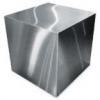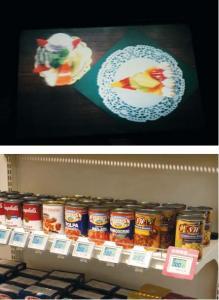Business Break & Trends in Japan
By Greg Lane
 Morpho
Morpho
Morpho exhibits a rare case of a Japanese tech company receiving attention from overseas investors. The Tokyo University spin-out received ¥165m of funding from Nokia Growth Partners. This is the fi rst deal for Nokia’s Venture Capital fund in Japan. Founded by Tokyo University researchers in 2004, Morpho Inc www.morphoinc.com produces imaging processing technology for applications in mobile devices. Specifically, Morpho is most well known for photo and video stabilization software.
 In a similar vein, Israel based Gizmoz announced that it has raised $US6.5 million in second round venture funding—NTT DoCoMo subsidiary DoCoMo Capital being the leading investor. GizMoz offers a service that allows users to upload their mug shot and create a life-like 3D animated avatar that can be used to personalize instant messaging chat sessions. With the help of DoCoMo Capital, GizMoz is looking to launch its services into the Japanese market. With the past success of services like ‘Print Club’ which allowed teenagers to snap and print decorated self portraits, GizMoz’ service could be a perfect fi t for the Japanese market.
In a similar vein, Israel based Gizmoz announced that it has raised $US6.5 million in second round venture funding—NTT DoCoMo subsidiary DoCoMo Capital being the leading investor. GizMoz offers a service that allows users to upload their mug shot and create a life-like 3D animated avatar that can be used to personalize instant messaging chat sessions. With the help of DoCoMo Capital, GizMoz is looking to launch its services into the Japanese market. With the past success of services like ‘Print Club’ which allowed teenagers to snap and print decorated self portraits, GizMoz’ service could be a perfect fi t for the Japanese market.
 Kobe Steel
Kobe Steel
Monolithic steel maker Kobe Steel has shown that it can be as innovative as the next company with the announcement that they have developed a type of steel sheet that significantly reduces electromagnetic wave emissions. Tin-foil hat wearers will be pleased to hear that the additives in the steel are reported to absorb up to 90% of emitted waves. This should be a lucrative niche market for Kobe as companies seek to prevent interference with sensitive electronic equipment. Sales are expected to begin this summer with a monthly sales target of 500 tonnes.
IPO Watch
Tata Motors
Producer of the US$2,500 ‘People’s car,’ Tata Motors of India announced that it will tap into Japanese capital markets with a listing on the Tokyo Stock Exchange. Although it is not clear how much the listing is intended to raise, according to the Nikkei Shimbun Tata is set to list this summer. The announcement of the listing follows Tata’s landmark acquisition of British makes Jaguar and Land Rover for US2$billion from Ford—announcing the Indian company as a genuine player in the global auto-manufacturing market. In terms of listings by foreign firms on the TSE, this will be one of the most significant listings for some time.
 Photohito
Photohito
Kakaku.com, a comparative shopping website that attracts more than 6 million users each month, has launched a photo sharing service ‘PhotoHito.’ Photohito. Com differs in important respects to the myriad of other photo sharing sites on the web with its focus on connecting info about the various lenses and equipment used to take the shots on the site. This will allow Kakaku.com to leverage its huge range of products and its ‘Kuchikomi’ (word of mouth) database. For example, if a user is thinking of buying a certain lens and wishes to see what kind of shots have been produced with it, they will be able to view photos taken by other users on Photohito. With the Japan Camera & Imaging Products Association reporting in February an 89.9% year on year rise in shipments of single-lens reflex cameras to 97,785 units, this seems like a smart move.
 Seven ElevenSeven-Eleven to sell Alcohol Online
Seven ElevenSeven-Eleven to sell Alcohol Online
The convenience store operator has announced that they will begin selling an enormous range of alcohol online from late June. The offerings will include 1,200 varieties of sake, 900 brands of shochu and 1,000 different wines. Despite the extensive range, will a beer ordered over the internet from Seven- Eleven match the instant gratifi cation of visiting the local konbini to pick up a tall one after a long day at the office?
If you have any news on new business, tech, start-ups or spin-offs, please contact Greg Lane at greg@quiva.net
Trends in Japan
When it comes to digital points of sale in Japan, the goal to increase efficiency and provide a better customer experience will always come first.
At the street level, many supermarkets are already integrating digital price tags into their shelves and eliminating the need for employees to manually replace stickers and labels. The prices are all controlled on a central computer which broadcasts the signal through radio-waves and updates all of the data simultaneously. For more attention-seeking products, there are now fully digital shelves with embedded color displays that can run ads or other videos. Far from being simple LCD monitors at the point of sale, the entire unit is built to be digital. Using motion sensors, the shelves can even detect the presence of customers and then display the prices for each item.
In the restaurant space, Japan has long been ahead of the curve with digital menus at tables to let customers order their food directly without talking to any staff, but it’s no longer just about the food. The digital menus have evolved into entertainment centers as well, providing everything from games to video content.
Now that the idea of digital table-top displays— such as the Microsoft Surface—have captured the public’s imagination, Japanese companies such as TEC are pushing it even further. The Tobidasu Menu is a digital menu embedded in the table that displays the items in 3D without the need for special glasses, allowing diners to get a more realistic view of what their meal will look like before ordering.
Of course, we can’t expect to see these in the corner shop any time soon, but even the simplest technology can have profound effects on the retail and dining experience for customers and the efficiency (and electric bills!) of businesses.
Cscout Japan is part of the global Cscout research, trend scouting, and Experience Tour network, focused on all segments of the deep and rapidly changing Japanese market landscape. Its popular daily blog can be found at www.CscoutJapan.com






